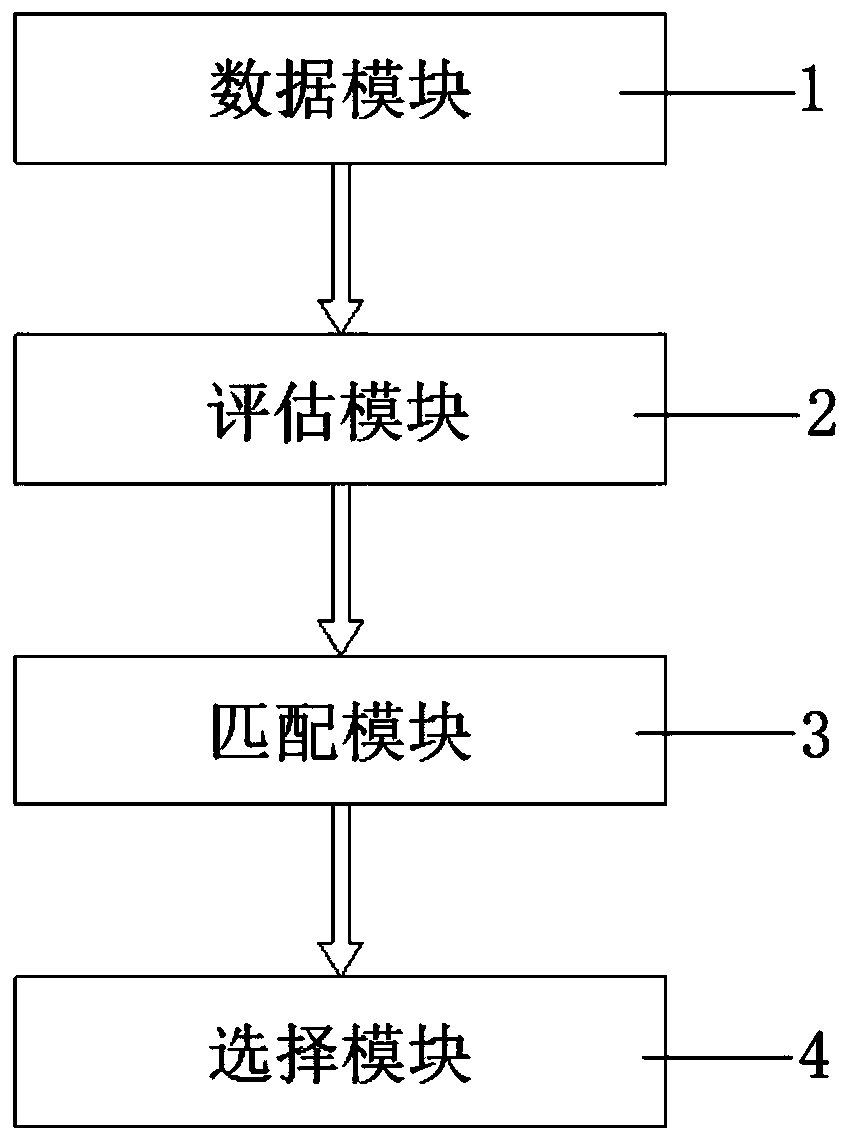Accurate selecting system for high myopia cataract artificial crystalline lens
An intraocular lens and high myopia technology, applied in the field of artificial intelligence, can solve problems such as large diopter prediction errors, achieve wide service targets, improve diagnosis and treatment efficiency, and save medical resources
- Summary
- Abstract
- Description
- Claims
- Application Information
AI Technical Summary
Problems solved by technology
Method used
Image
Examples
Embodiment 1
[0038] The establishment process of the high myopia cataract intraocular lens accurate selection system of the present invention is as follows figure 1 As shown, the details are as follows:
[0039]1. Construct a deep learning model for the calculation of high myopia cataract intraocular lens diopters; provide the machine with a large amount of clinical data and corresponding postoperative diopters for learning, each data includes the patient's age, gender, refractive surgery status, vitreous body State, preoperative diopter, axial length, depth of anterior chamber, lens thickness, white-to-white distance, corneal curvature radius, implanted intraocular lens type, power and postoperative diopter, the machine constructs based on different artificial The power calculation model of the lens type, through repeated training and debugging of large samples in the training set, and through the test set test to meet the prediction accuracy requirements, and finally successfully build a...
Embodiment 2
[0051] A 58-year-old male patient with blurred vision in his right eye for 1 year. He was highly myopic in the past and wore -10.0D glasses. He visited our hospital and was diagnosed with high myopia in the right eye complicated with cataract. He denied any history of eye surgery. Ophthalmological examination showed that the axial length of the right eye was 27.82mm, the corneal refractive power K1=41.83D, K2=42.44D, the anterior chamber depth was 2.78mm, the white-to-white distance was 11.70mm, and the lens thickness was 3.25mm. The patient usually likes to read, and close-up eye time accounts for 60% of daily life. After inputting the information into the highly myopic cataract intraocular lens precision selection system, the system judges that the reserved diopter of the patient after surgery is -3.5D, which is suitable for implantation of ZCB0015.5D artificial lens lens. One day after the operation, the uncorrected distance visual acuity of the right eye was 0.3, the uncor...
Embodiment 3
[0053] A 75-year-old female patient had blurred vision in her left eye for 10 years. She was highly myopic in the past but never received glasses. She visited our hospital and was diagnosed with high myopia in the left eye complicated by cataract. She denied any history of eye surgery. Ophthalmological examination showed that the axial length of the left eye was 31.32mm, the corneal refractive power K1=41.44D, K2=41.86D, the anterior chamber depth was 3.46mm, the white-to-white distance was 12.95mm, and the lens thickness was 3.46mm. The patient used to be a farmer, but now he spends more time watching TV at home, and basically has no need for close-up eyesight. After inputting the information into the highly myopic cataract intraocular lens precise selection system, the system judged that the reserved diopter of the patient after surgery was -1.0D, which was suitable for implanting the HumanOptics MC X11ASP 3.0D intraocular lens. One day after the operation, the uncorrected d...
PUM
 Login to View More
Login to View More Abstract
Description
Claims
Application Information
 Login to View More
Login to View More - R&D
- Intellectual Property
- Life Sciences
- Materials
- Tech Scout
- Unparalleled Data Quality
- Higher Quality Content
- 60% Fewer Hallucinations
Browse by: Latest US Patents, China's latest patents, Technical Efficacy Thesaurus, Application Domain, Technology Topic, Popular Technical Reports.
© 2025 PatSnap. All rights reserved.Legal|Privacy policy|Modern Slavery Act Transparency Statement|Sitemap|About US| Contact US: help@patsnap.com



